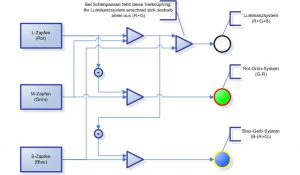How often does Windows 7 automatically defragment a hard drive?
By default, Windows 7 automatically schedules a disk defragmentation session to run every week.
However, you do have to ensure that your computer is ready for the defrag process.
Not too long ago, defragmenting your hard drive rated as a Real Big Deal.
In which folder is the Windows Registry stored?
The location for system registry files in Windows NT is %SystemRoot%\System32\Config; the user-specific HKEY_CURRENT_USER user registry hive is stored in Ntuser.dat inside the user profile.
What is the SystemRoot folder as used in Microsoft documentation?
24 Cards in this Set
| What is the purpose of the Windows.old folder? | Holds previous versions of the Windows installation |
|---|---|
| What is the %SystemRoot% folder as used in Microsoft documentation | C:\Windows |
| What vista utility creates restore points? | System Restore |
| Where are restore points kept? | C:\System Volume information |
20 more rows
What is the fourth partition on a hard drive called?
cluster. What is the fourth partition on a hard drive called? extended partition. Windows Disk Cleanup is the utility to use whenever you want to defragment your hard drive. false.
Does Windows 7 need to be Defragged?
If you’re using either Windows 7, 8, or even Vista, your system is already configured to run defrag on a regular basis—generally 1 AM every Wednesday. You can check for yourself by opening up Disk Defragmenter and seeing the schedule there, as well as the last run and fragmentation levels.
Does Windows 7 have a disk defragmenter?
Find the Windows 7 Defragmenter. In XP, you had to defrag manually. It’s just as important to defrag a Windows 7 computer on a regular basis, but there are some new options and a new look. To get to the defragger, click on the Start button, and type in “disk defragmenter” in the search window at the bottom.
Where are registry backups stored?
Registry backup copy is stored in the C:\Windows\System32\config\RegBack. To recover registry from the Command Prompt you need to copy the contents of this folder to C:\Windows\System32\config (the registry file folder).
Where can I find registry files in Windows 7?
Location of Windows registry files. These files are database files, and only RegEdit, Regedit32 and the Kernel32 can read them. The primary tool in Windows 10/8/7 for working directly with the registry is Registry Editor. To access it, simply type Regedit in Start Menu Search Bar and hit Enter !
What are the files that make up a system registry called?
What files make up the registry, and where are they?
- SAM – HKEY_LOCAL_MACHINE\SAM.
- SECURITY – HKEY_LOCAL_MACHINE\Security.
- software – HKEY_LOCAL_MACHINE\Software.
- system – HKEY_LOCAL_MACHINE\System & HKEY_CURRENT_CONFIG.
- default – HKEY_USERS\.DEFAULT.
- Ntuser.dat – HKEY_CURRENT_USER (this file is stored in %SystemRoot%\Profiles\%username%)
What is the maximum amount of memory supported by a 32 bit Windows operating system?
Yes, on a 32bit machine the maximum amount of memory usable is around 4GB. Actually, depending on the OS it might be less due to parts of the address space being reserved: On Windows you can only use 3.5GB for example. On 64bit you can indeed address 2^64 bytes of memory.
What does the term x86 refer to?
X86. x86 is the generic name for Intel processors released after the original 8086 processor. For this reason, Intel’s 586 processor is formally known as the Pentium processor. However, software developers still often refer to processors by their number.
What is another name for the notification area in Windows?
The notification area (also called the “system tray”) is located in the Windows Taskbar, usually at the bottom right corner. It contains miniature icons for easy access to system functions such as antivirus settings, printer, modem, sound volume, battery status, and more.
Can I stop defragmentation in the middle?
1 Answer. You can safely stop Disk Defragmenter, so long as you do it by clicking the Stop button, and not by killing it with Task Manager or otherwise “pulling the plug.” Disk Defragmenter will simply complete the block move it is currently performing, and stop the defragmentation.
Do you still need to defrag your computer?
Fragmentation doesn’t cause your computer to slow down as much as it used to—at least not until it’s very fragmented—but the simple answer is yes, you should still defragment your computer. However, your computer may already do it automatically.
How often should you defrag your computer?
Most people should defrag their hard drives about once a month, but your computer might need it more frequently. Windows users can use the built-in disk defragmenter utility on their computers. Run a system scan, then follow the tool’s device. It will tell you whether or not your hard drive requires defragging.
What is the path to the recycle bin?
Recycle Bin is located in a hidden directory named \$Recycle.Bin\%SID%, where %SID% is the SID of the user that performed the deletion. You will need to enable showing Protected File System files option in folder options. The Recycle Bin folders should now be visible in the root of the drive.
What is Windows SAM registry?
The Security Accounts Manager (SAM) is a registry file in Windows NT and later versions until the most recent Windows 8. The SAM registry file is located on your system at C:\WINDOWS\system32\config, but it is locked and cannot be moved or copied while Windows is running.
Why does Windows use a registry?
The Windows Registry serves as an archive for collecting and storing the configuration settings of Windows components, installed hardware/software/application and more. When keys are added to the registry, the data are sorted as computer-specific data or user-specific data in order to support multiple users.
Can x86 run on x64?
X86 based PC means the Windows currently installed is 32 bit. then your PC is capable of running 64 bit OS. If the system type says x86 and not x64, then you can’t run Windows 10 64 bit.
What is x86 vs x64?
(X86-based 64-bit) The current computer architecture from Intel and AMD. Also called “x86-64,” modern x86-based laptop and desktop computers have 64-bit CPUs rather than 32 bits. The x64 generally refers to the hardware, not the operating system.
Which is better x86 or x64?
If you use it on a 64bit operating system you will run into limitations such as the processor not being able to access all 4GB+ of ram. The same goes for using a x64 on a 32bit. It will function fine but it is not being used up too it’s full potential. Basically, x86 = 32bit(>3.5GB RAM), x64 = 64bit(4GB RAM+).
Can a hard drive have only one single root directory?
A hard drive can only have one single root directory, but Linux doesn’t treat this root directory the same exact way that Windows might have. New users who are coming over from other operating systems might be confused as a result.
What is the notification area in Windows 7?
The notification area is a part of the taskbar that provides a temporary source for notifications and status. It can also be used to display icons for system and program features that are not on the desktop.
What is the notification area on a computer?
In computing, a notification area (also system tray or status area) is the portion of the user interface that displays icons for system and program features that have no presence on the desktop as well as the time and the volume icon.
Photo in the article by “Wikipedia” https://de.wikipedia.org/wiki/Wikipedia:Auskunft/Archiv/2010/Woche_30

